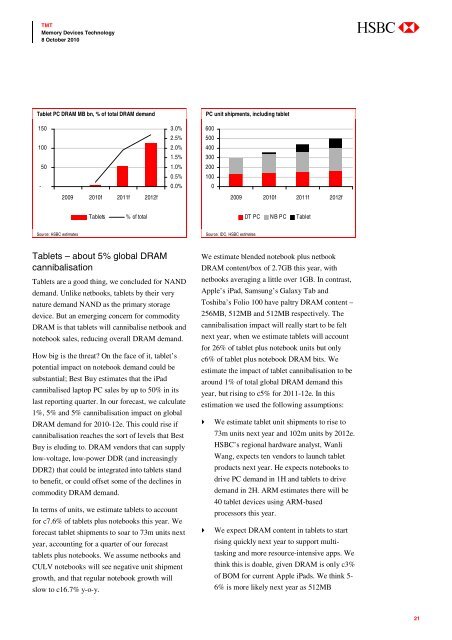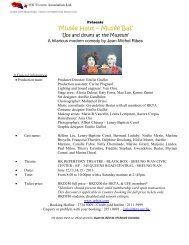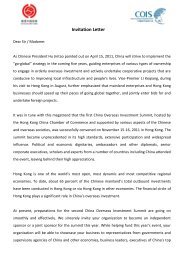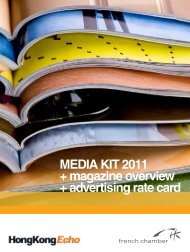Create successful ePaper yourself
Turn your PDF publications into a flip-book with our unique Google optimized e-Paper software.
TMT<br />
<strong>Memory</strong> Devices Technology<br />
8 October 2010<br />
abc<br />
Tablet PC DRAM MB bn, % of total DRAM demand<br />
150<br />
100<br />
50<br />
-<br />
2009 2010f 2011f 2012f<br />
3.0%<br />
2.5%<br />
2.0%<br />
1.5%<br />
1.0%<br />
0.5%<br />
0.0%<br />
PC unit shipments, including tablet<br />
600<br />
500<br />
400<br />
300<br />
200<br />
100<br />
0<br />
2009 2010f 2011f 2012f<br />
Tablets<br />
% of total<br />
DT PC NB PC Tablet<br />
Source: HSBC estimates<br />
Source: IDC, HSBC estimates<br />
Tablets – about 5% global DRAM<br />
cannibalisation<br />
Tablets are a good thing, we concluded for NAND<br />
demand. Unlike netbooks, tablets by their very<br />
nature demand NAND as the primary storage<br />
device. But an emerging concern for commodity<br />
DRAM is that tablets will cannibalise netbook and<br />
notebook sales, reducing overall DRAM demand.<br />
How big is the threat? On the face of it, tablet’s<br />
potential impact on notebook demand could be<br />
substantial; Best Buy estimates that the iPad<br />
cannibalised laptop PC sales by up to 50% in its<br />
last reporting quarter. In our forecast, we calculate<br />
1%, 5% and 5% cannibalisation impact on global<br />
DRAM demand for 2010-12e. This could rise if<br />
cannibalisation reaches the sort of levels that Best<br />
Buy is eluding to. DRAM vendors that can supply<br />
low-voltage, low-power DDR (and increasingly<br />
DDR2) that could be integrated into tablets stand<br />
to benefit, or could offset some of the declines in<br />
commodity DRAM demand.<br />
In terms of units, we estimate tablets to account<br />
for c7.6% of tablets plus notebooks this year. We<br />
forecast tablet shipments to soar to 73m units next<br />
year, accounting for a quarter of our forecast<br />
tablets plus notebooks. We assume netbooks and<br />
CULV notebooks will see negative unit shipment<br />
growth, and that regular notebook growth will<br />
slow to c16.7% y-o-y.<br />
We estimate blended notebook plus netbook<br />
DRAM content/box of 2.7GB this year, with<br />
netbooks averaging a little over 1GB. In contrast,<br />
Apple’s iPad, Samsung’s Galaxy Tab and<br />
Toshiba’s Folio 100 have paltry DRAM content –<br />
256MB, 512MB and 512MB respectively. The<br />
cannibalisation impact will really start to be felt<br />
next year, when we estimate tablets will account<br />
for 26% of tablet plus notebook units but only<br />
c6% of tablet plus notebook DRAM bits. We<br />
estimate the impact of tablet cannibalisation to be<br />
around 1% of total global DRAM demand this<br />
year, but rising to c5% for 2011-12e. In this<br />
estimation we used the following assumptions:<br />
We estimate tablet unit shipments to rise to<br />
73m units next year and 102m units by 2012e.<br />
HSBC’s regional hardware analyst, Wanli<br />
Wang, expects ten vendors to launch tablet<br />
products next year. He expects notebooks to<br />
drive PC demand in 1H and tablets to drive<br />
demand in 2H. ARM estimates there will be<br />
40 tablet devices using ARM-based<br />
processors this year.<br />
We expect DRAM content in tablets to start<br />
rising quickly next year to support multitasking<br />
and more resource-intensive apps. We<br />
think this is doable, given DRAM is only c3%<br />
of BOM for current Apple iPads. We think 5-<br />
6% is more likely next year as 512MB<br />
21
















